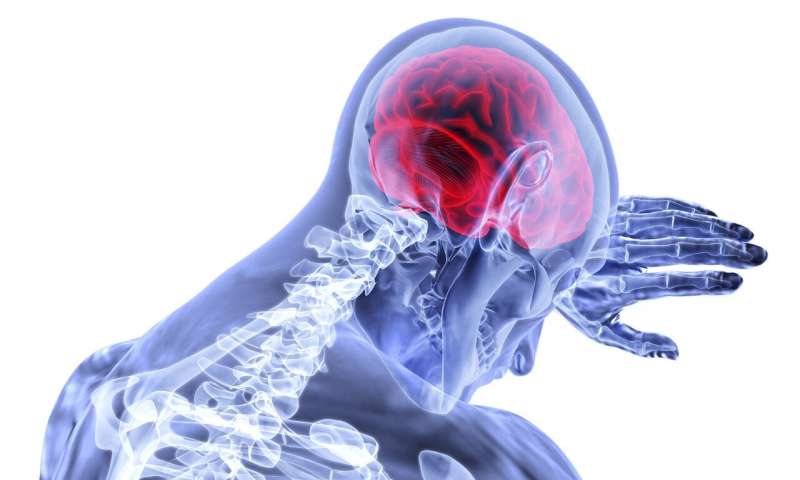In a surprising discovery, researchers at Massachusetts General Hospital (MGH) identified a mechanism that protects the brain from the effects of hypoxia, a potentially lethal deprivation of oxygen. This serendipitous finding, which they report in Nature Communications, could aid in the development of therapies for strokes, as well as brain injury that can result from cardiac arrest, among other conditions.
However, this study began with a very different objective, explains senior author Fumito Ichinose, MD, Ph.D., an attending physician in the Department of Anesthesia, Critical Care and Pain Medicine at MGH, and principal investigator in the Anesthesia Center for Critical Care Research. One area of focus for Ichinose and his team is developing techniques for inducing suspended animation, that is, putting a human’s vital functions on temporary hold, with the ability to “reawaken” them later. This state of being would be similar to what bears and other animals experience during hibernation. Ichinose believes that the ability to safely induce suspended animation could have valuable medical applications, such as pausing the life processes of a patient with an incurable disease until an effective therapy is found. It could also allow humans to travel long distances in space (which has frequently been depicted in science fiction).
A 2005 study found that inhaling a gas called hydrogen sulfide caused mice to enter a state of suspended animation. Hydrogen sulfide, which has the odor of rotten eggs, is sometimes called ‘sewer gas.’ Oxygen deprivation in a mammal’s brain leads to increased production of hydrogen sulfide. As this gas accumulates in the tissue, hydrogen sulfide can halt energy metabolism in neurons and cause them to die. Oxygen deprivation is a hallmark of ischemic stroke, the most common type of stroke, and other injuries to the brain.
In the Nature Communications study, Ichinose and his team initially set out to learn what happens when mice are exposed to hydrogen sulfide repeatedly, over an extended period. At first, the mice entered a suspended-animation-like state—their body temperatures dropped and they were immobile. “But, to our surprise, the mice very quickly became tolerant to the effects of inhaling hydrogen sulfide,” says Ichinose. “By the fifth day, they acted normally and were no longer affected by hydrogen sulfide.”
Interestingly, the mice that became tolerant to hydrogen sulfide were also able to tolerate severe hypoxia. What protected these mice from hypoxia? Ichinose’s group suspected that enzymes in the brain that metabolize sulfide might be responsible. They found that levels of one enzyme, called sulfide:quinone oxidoreductase (SQOR), rose in the brains of mice when they breathed hydrogen sulfide several days in a row. They hypothesized that SQOR plays a part in resistance to hypoxia.
There was strong evidence for this hypothesis in nature. For example, female mammals are known to be more resistant than males to the effects of hypoxia—and the former have higher levels of SQOR. When SQOR levels are artificially reduced in females, they become more vulnerable to hypoxia. (Estrogen may be responsible for the observed increase in SQOR, since protection from the adverse effects of hypoxia is lost when a female mammal’s estrogen-producing ovaries are removed.) Moreover, some hibernating animals, such as the thirteen-lined ground squirrel, are highly tolerant of hypoxia, which allows them to survive as their bodies’ metabolism slows down during the winter. A typical ground squirrel’s brain has 100 times more SQOR than that of a similar-sized rat. However, when Ichinose and colleagues ‘turned off’ expression of SQOR in the squirrels’ brains, their protection against the effects of hypoxia vanished.
Meanwhile, when Ichinose and colleagues artificially increased SQOR levels in the brains of mice, “they developed a robust defense against hypoxia,” explains Ichinose. His team increased the level of SQOR using gene therapy, an approach that is technically complex and not practical at this point. On the other hand, Ichinose and his colleagues demonstrated that “scavenging” sulfide, by using an experiment drug called SS-20, reduced levels of the gas, thereby sparing the brains of mice when they were deprived of oxygen.
Human brains have very low levels of SQOR, meaning that even a modest accumulation of hydrogen sulfide can be harmful, says Ichinose. “We hope that someday we’ll have drugs that could work like SQOR in the body,” he says, noting that his lab is studying SS-20 and several other candidates. Such medications could be used to treat ischemic strokes, as well as patients who have suffered cardiac arrest, which can lead to hypoxia. Ichinose’s lab is also investigating how hydrogen sulfide affects other parts of the body. For example, hydrogen sulfide is known to accumulate in other conditions, such as certain types of Leigh syndrome, a rare but severe neurological disorder that usually leads to early death. “For some patients,” says Ichinose, “treatment with a sulfide scavenger might be lifesaving.”
Massachusetts General Hospital


